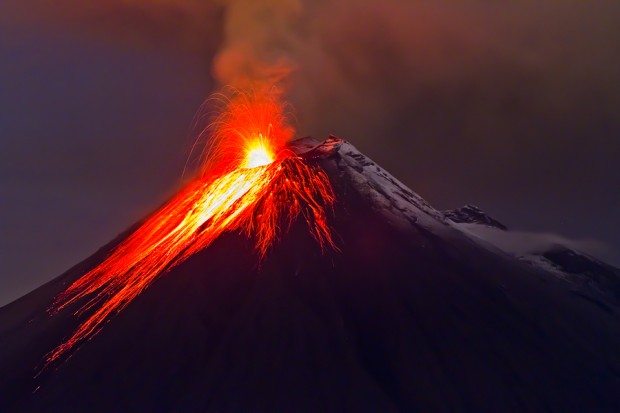It wasn’t until mid-July this year that I had ever heard the term “lava bomb” or thought about the prospect of a Category 6 hurricane.
But both were in the news around the time I read about another natural climate risk event for the first time: the year without a summer.
In an early draft of the opening article in the section of our Sept/Oct magazine on Emerging Risks and Future Trends, Guest Editor Karen Morris referred to “the coldest June on record” at Lake Geneva in Switzerland, explaining this was part of the impact of “Volcano Tambora’s eruption in Indonesia.”
How exactly did a volcano in Indonesia create a summer of cold and darkness in Europe?
In a footnote, Morris explained further that the volcano’s 1816 eruption in Indonesia “dropped two metric tons of debris into the atmosphere, shrouding India, Europe and North America.” A 2016 Washington Post article marking the 200th anniversary of the event elaborates: “The newly-formed, sunlight-absorbing cloud spread far and wide around the globe, preventing the sun’s rays from warming the surface of the Earth.”
Wikipedia reveals that the volcano’s impact included frost in New England, producing an agricultural disaster in the U.S., and red snow in Italy.
All that seemed even more frightening than news that lava still spewing from Hawaii’s Kilauea eruption had combined with water to explode into fragments, referred to as bombs, to injure 23 boat passengers in July this year. Yet both serve as reminders that despite our attention in this edition to risks emerging from technology and manmade perils, climate risks still need to be high on the radar screens of insurers.
In fact, they are.
Risk experts surveyed for the “Global Risks Report” of the World Economic Forum ranked extreme weather events as the single most prominent risk. And our second guest editor, Claims Journal Editor Denise Johnson, who is responsible for gathering most of the content in the Claims/Legal section of this magazine (pages 53-69), reminds us of the impacts of two Category 5 hurricanes on insurers in her lead article about using satellites in handling hurricane claims. (And now there’s speculation about a Category 6 on the horizon.)
Perhaps a greater takeaway from the story of Volcano Tambora is the idea that the world is connected in ways we don’t often appreciate—and connections don’t arise just because of the Internet of Things.
Connectivity, in a way, is the theme of Morris’ article, “It’s Still Alive: Connecting Art and Science, Past and Future to Grasp Monster Risk and Spark Innovation,” in which she makes unlikely connections between the creators of Romantic literature in a past time and the innovators of tomorrow. Along the way, she explores the consequences of innovations, like those connected to technology and artificial intelligence, that today’s risk experts must understand and navigate.
Above all, weaving in an “explicit call to action to the insurance industry,” she suggests that today’s risk experts must act to “influence” makers and users of technological innovations, to address emerging risks (not exclude them ex post facto), to participate in innovating to address unmet needs, and to positively inform corporate behavior as new risks and ideas serve up new ethical and moral challenges for modern businesses.





















 La Nina 60% Likely to Develop Between June-August
La Nina 60% Likely to Develop Between June-August  That Insurance Talent Crisis? It’s a Global Knowledge Opportunity
That Insurance Talent Crisis? It’s a Global Knowledge Opportunity  Former MLB Player Charged With Insurance Fraud in Florida
Former MLB Player Charged With Insurance Fraud in Florida  Triple-I: Insurance Economic Drivers Outperform Overall U.S. GDP
Triple-I: Insurance Economic Drivers Outperform Overall U.S. GDP 








